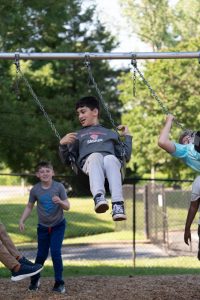
Finding Balance: Routine and Unstructured Time at John Crosland School
At John Crosland School, we understand that students with learning differences thrive in environments that provide both structure and flexibility. The delicate balance between routine and unstructured time is essential for their development, and we strive to create a nurturing atmosphere that caters to their unique needs.
The Power of Routine
For students with learning differences, routine is a cornerstone of their daily experience. Predictability and consistency provide a sense of security, helping them to focus and engage more effectively in their learning. At John Crosland School, we ensure that each day includes structured activities that students can rely on. This consistency is particularly beneficial for students with conditions such as ADHD, autism, and anxiety, where sudden changes can be overwhelming.
Structured Outdoor Breaks
One of the ways we integrate routine into our daily schedule is through designated outdoor breaks. Every morning, students enjoy a minimum of 15 minutes outside, allowing them to reset and recharge. This break is not just a time for physical activity; it’s an opportunity for students to practice social skills, develop friendships, and engage in unstructured play. The morning break sets a positive tone for the rest of the day, helping students return to their studies with renewed focus and energy.
Take one of our fifth-graders who once said, “I love our morning break! It’s like hitting the refresh button on my brain. Plus, where else can you have a serious discussion about dinosaurs while swinging as high as you can?”
Lunch and Recess: A Time for Growth
Our commitment to balancing structure with freedom is further exemplified in our lunch and recess periods. Each day includes a 45-minute lunch/recess that incorporates outdoor time. This extended break provides ample opportunity for students to explore their interests, collaborate with peers, and simply enjoy the freedom of play. For many students, this unstructured time is when they experience the most significant growth, as they navigate social interactions and develop problem-solving skills in a natural, less structured environment.
A parent of one of our students shared, “I used to worry about how my child would handle unstructured time. The unknown is scary. But now I see how he’s learned to make friends and solve problems on his own. He even started a ‘Recess Detective Club’ with his friends to solve playground mysteries!”
The Beauty of Unstructured Time
While routine is crucial, we also recognize the immense value of unstructured time. This is when creativity flourishes, and students learn to manage their own activities and make choices independently. Unstructured time allows students to explore new interests, develop hobbies, and build resilience. It’s during these moments that they often discover their passions and talents, which might not always be evident in a structured classroom setting.
A Balanced Approach
The balance between routine and unstructured time is not just beneficial but necessary for the development of students with learning differences. It can certainly be a tricky line to walk because they seem like opposing forces and it does not always happen seamlessly. However, we’ve found that this balance is not only achievable but essential.
So next time you see our students outside, remember—they’re not just playing. They’re learning life skills, solving mysteries, and discussing dinosaurs. And that’s a balance worth celebrating.





Sorry, the comment form is closed at this time.